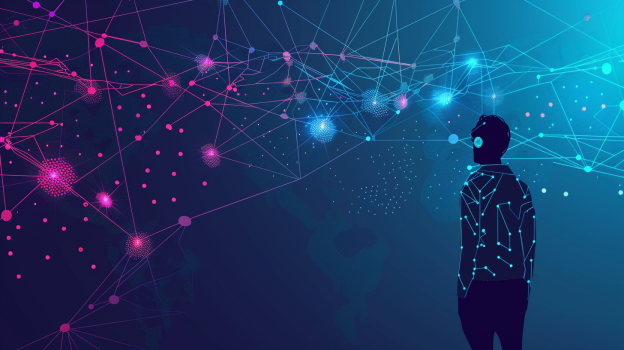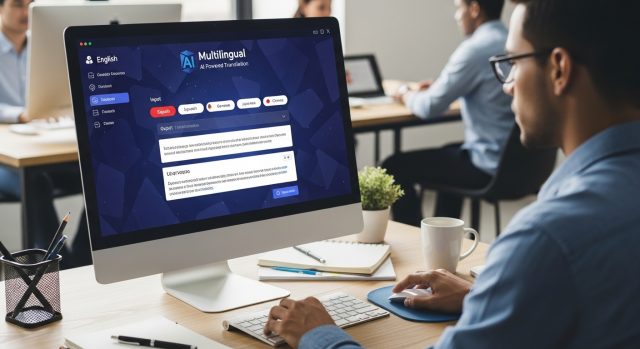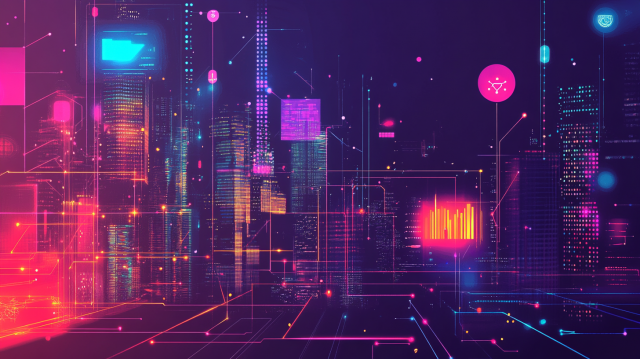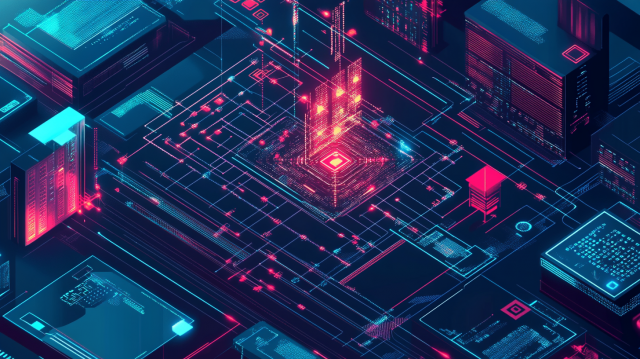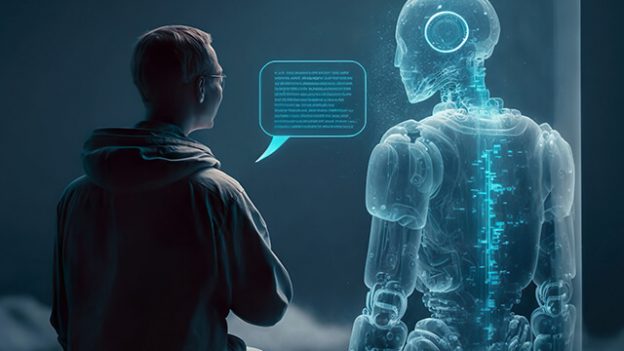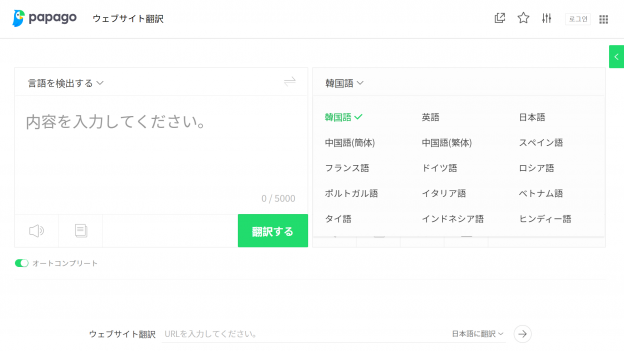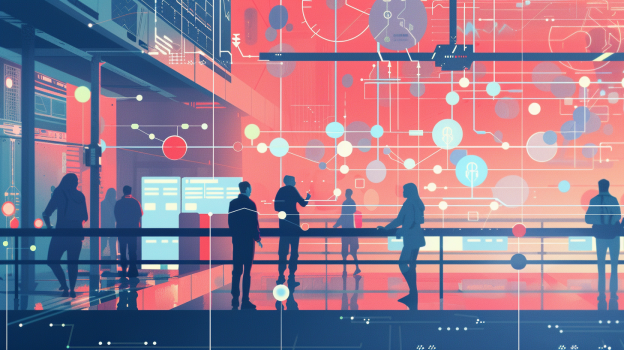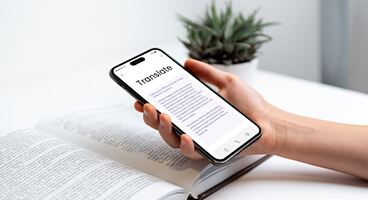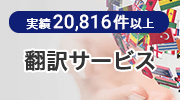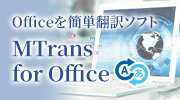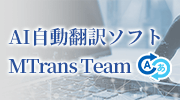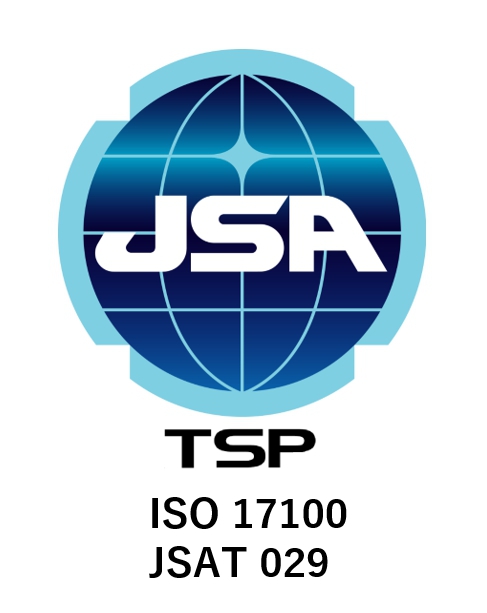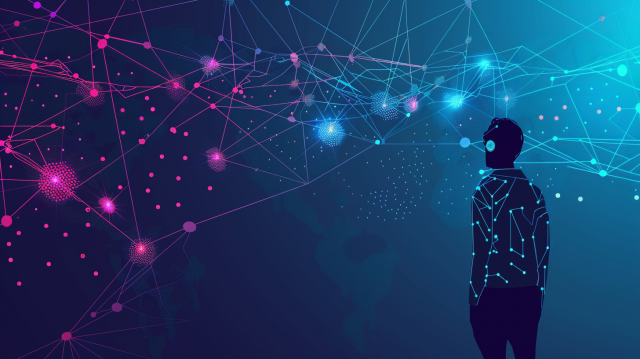
- Table of Contents
-
- 1. What is Gemini?
- 1-1. What You Can Do with Gemini
- 1-2. Features of Gemini
- 2. Commonalities and Differences between Gemini, ChatGPT, and Claude
- 2-1. Common Points
- 2-2. Differences
- 3. Comparing the Translation Capabilities of Gemini, ChatGPT, and Claude!
- 3-1. Raw translation
- 3-2. Use natural Japanese
- 3-3. Use semi-formal style (de aru style)
- 3-4. Keep the company name in English and add "社" (Inc.)
- 4. Automatic Revision of Fuzzy Matches in the Translation Memory
- 4-1. Automatic revision of fuzzy matches in the translation memory
- 4-2. Automatic revision of fuzzy matches in the translation memory + glossary specification
- 5. Summary
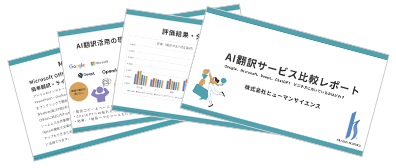
Generative AI such as OpenAI's ChatGPT, Google's Gemini, and Anthropic's Claude are gaining a lot of attention. These generative AIs excel in language capabilities and can be used for translation. This article compares the translation capabilities of each generative AI. Note that reviewing the confidentiality policies is important when using them for translation tasks. For more details on the confidentiality policies of each service, please see the article below.
Is Confidentiality Maintained with ChatGPT, Copilot, Gemini, and Claude?
1. What is Gemini?
Gemini is an AI model developed by Google DeepMind. It was created not just as a chatbot or search assistant, but as a "multimodal AI" capable of understanding and integrating multiple forms of information like a human. This AI can interpret not only text but also images, audio, and video, generating context-appropriate outputs. It works in conjunction with various services offered by Google, demonstrating its capabilities as a "smart assistant" in many situations.
1-1. What You Can Do with Gemini
By using Gemini, you can streamline various tasks. Specifically, this includes drafting emails, proofreading texts, analyzing images and charts and generating explanations based on them, assisting with programming and code reviews, and summarizing learning materials. Additionally, it can handle tasks through integration with tools like Google Docs and Spreadsheets, as well as support research on trends and the latest information. These are examples of Gemini's capabilities, and it is expected to be utilized in a wide range of applications, from business support in professional settings to information gathering in daily life.
1-2. Features of Gemini
A major feature that sets Gemini apart from other AIs is its support for "multimodal" capabilities. This refers to the ability to handle multiple types of information simultaneously, not just text but also images and audio. For example, it can combine images with related text to understand content, or link audio data with text information for processing. This is similar to how humans use multiple senses, such as sight and hearing, to capture information and comprehend complex content.
One of Gemini's key strengths is its seamless integration with various services provided by Google. This supports practical tasks such as drafting email replies and organizing tasks based on schedule information. It also has strong multilingual capabilities, delivering natural and accurate responses in many languages, including Japanese and English.
Gemini can handle a large amount of information at once, allowing it to think logically and accurately grasp the context to provide answers. Therefore, it is also capable of analyzing complex discussions and making inferences or proposals based on deep insights into business challenges.
One of the unique features of Google, which excels in search, is the integration of search technology and generative AI. Generative AI sometimes produces uncertain information (so-called hallucinations), but Gemini includes a mechanism that allows users to verify the sources and accuracy of the generated information to mitigate this risk.
2. Commonalities and Differences between Gemini, ChatGPT, and Claude
2-1. Common Points
Generative AIs such as Gemini, ChatGPT, and Claude are artificial intelligences capable of creating new content. These generative AIs are based on large language models (LLMs) trained on vast amounts of text data, enabling them to produce content in various formats including text, images, audio, and code. They feature versatility with the ability to engage in natural, human-like conversations, understand context, and handle a wide range of tasks.
In contrast, other types of AI each have different purposes and capabilities. Analytical and predictive AI specialize in extracting insights and future trends from existing data but do not create new content. Pattern recognition AI excels at identifying patterns in images and audio but does not generate new creations based on those recognitions. Rule-based AI operates according to predefined rules, lacking flexibility and often unable to handle unexpected inputs. Reinforcement learning AI specializes in finding optimal solutions for specific tasks through trial and error but does not possess the creative abilities of generative AI.
The innovative aspect of generative AI is its ability to create entirely new content based on training data and to possess human-like conversational skills. While other AIs mainly focus on data processing and optimizing specific tasks, generative AI demonstrates high capabilities in both understanding and creativity. This difference is one of the reasons why generative AI has rapidly gained popularity in recent years.
2-2. Differences
Gemini was developed by Google DeepMind, Google's AI research division, and Google AI. On the other hand, ChatGPT was developed by OpenAI, an AI research company, and Claude was created by Anthropic, an AI startup.
A major feature of Gemini is its multimodal capability, which allows it to handle various types of information such as text, images, videos, and audio. It is also deeply integrated with services like Google Search and Gmail, excelling in processing large amounts of information and understanding and reasoning through complex problems. The latest ChatGPT models support both image and audio input and output, enabling smoother conversations. It also offers a wide range of functions including web search, image creation, and data analysis. Claude is developed with the goal of being a kind and safe AI, excelling in natural language conversations, writing, and summarization. It has a strong ability to process long texts and is committed to realizing ethical AI. It also supports image input and includes features to assist with code creation and collaborative work.
Gemini supports various data formats such as text, code, images, videos, and audio. It can handle document files, spreadsheets, and programming code. ChatGPT can process text, audio, and images, and supports document files like PDF and Word, spreadsheets like Excel, and various code formats. Claude can handle text and images, as well as document files such as PDF, Word, and CSV.
Gemini excels in academic research, large-scale document processing, and real-time information access. It is also proficient in creative content creation, planning, and accurate image generation, with particularly smooth integration with Google's services. ChatGPT is excellent for programming tasks, supporting structured research, and maintaining tone during translation. Claude is strong in handling advanced text and code, characterized by a natural writing style.
Gemini can sometimes feel awkward in conversation compared to ChatGPT and has limitations in image generation and handling complex tasks. Like other chatbots, it may provide inaccurate information and has biases in its training data. ChatGPT, especially in long conversations, can struggle to remember context and may generate factually incorrect or inappropriate responses. Claude tends to be somewhat less creative and more conservative in its replies compared to ChatGPT. Both Gemini and ChatGPT feature Deep Research capabilities, enabling responses using the latest information and generating reports that integrate dozens to over a hundred sources.
3. Comparing the Translation Capabilities of Gemini, ChatGPT, and Claude!
Let's compare the translation capabilities as machine translation engines.
3-1. Comparison of Raw Translations
I executed the translation with a simple prompt: "Translate into Japanese. Output only the translated text." The translations generated by each AI are as follows. Focusing on the translations of "Leading the pack" and "know a thing or two," all AIs avoided literal translations and rendered natural expressions in Japanese; however, considering the business context, Claude used the most appropriate expressions.
| Source | Leading the pack was AAA Media Group, followed by BBB Video, and CCC Technologies. DDD Brothers and EEE Wire came in fourth and fifth, respectively. AAA is a highly successful fully remote company with hundreds of employees, so we know a thing or two about building a remote work environment. |
|---|---|
| ChatGPT | The leader was AAA Media Group, followed by BBB Video and CCC Technologies. DDD Brothers and EEE Wire ranked 4th and 5th respectively. AAA is a highly successful fully remote company with several hundred employees and is confident in building remote work environments. |
| Gemini | The top was AAA Media Group, followed by BBB Video and CCC Technologies. DDD Brothers and EEE Wire were ranked 4th and 5th respectively. AAA is a very successful fully remote company with hundreds of employees, so they are well versed in building remote work environments. |
| Claude | AAA Media Group took the lead, followed by BBB Video and CCC Technology. DDD Brothers and EEE Wire ranked fourth and fifth respectively. AAA is a highly successful fully remote company with hundreds of employees and extensive expertise in building remote work environments. |
3-2. Comparison of Translations in Natural Japanese
Next, I tried the prompt "Translate into natural Japanese. Output only the translation." ChatGPT's translation changed and improved to the expression "has extensive knowledge." Gemini also changed, but the phrase "has an advantage" feels too formal. Claude said "has sufficient knowledge," which ended up sounding rather awkward.
| ChatGPT | The leader was AAA Media Group, followed by BBB Video and CCC Technologies. DDD Brothers and EEE Wire ranked 4th and 5th respectively. AAA is a highly successful company with hundreds of employees operating fully remotely, and has extensive expertise in building remote work environments. |
| Gemini | The leader is AAA Media Group, followed by BBB Video and CCC Technologies. DDD Brothers and EEE Wire ranked 4th and 5th respectively. AAA is a highly successful fully remote company with hundreds of employees and has a significant advantage in building remote work environments. |
| Claude | AAA Media Group led the way, followed by BBB Video and CCC Technologies. DDD Brothers and EEE Wire ranked fourth and fifth respectively. AAA is a highly successful fully remote company with hundreds of employees and extensive knowledge in building remote work environments. |
3-3. Comparison of translations specifying semi-formal style (de aru style)
In some cases, documents may need to be translated in a semi-formal style of Japanese (de/aru style). Therefore, I tried a prompt that said, "Translate into polite Japanese (da/de aru style). Output only the translated text." All AI text generators were able to translate in this semi-formal style.
| ChatGPT | The leader was AAA Media Group, followed by BBB Video and CCC Technologies. DDD Brothers and EEE Wire ranked fourth and fifth, respectively. AAA is a highly successful fully remote company with hundreds of employees and has a significant advantage in building remote work environments. |
| Gemini | The top position was held by AAA Media Group, followed by BBB Video and CCC Technologies. DDD Brothers and EEE Wire ranked 4th and 5th respectively. AAA is a highly successful fully remote company with several hundred employees and has a significant advantage in building remote work environments. |
| Claude | AAA Media Group took the lead, followed by BBB Video and CCC Technologies. DDD Brothers and EEE Wire ranked fourth and fifth respectively. AAA is a highly successful fully remote company with hundreds of employees, and we know a lot about building remote work environments. |
3-4. Comparison of translations when keeping the company name in English and adding "社" (Inc.)
Translation instructions and style guides sometimes specify that company names remain in English with the suffix "sha" added. Therefore, we tried the prompt: "Translate into Japanese. Output only the translated text. Keep company names in English and add the suffix 'sha'." All the AI generators faithfully followed the instructions.
| ChatGPT | The leader was AAA Media Group, followed by BBB Video and CCC Technologies. DDD Brothers and EEE Wire ranked 4th and 5th respectively. AAA is a highly successful fully remote company with hundreds of employees and has considerable expertise in building remote work environments. |
| Gemini | The top was AAA Media Group, followed by BBB Video and CCC Technologies. DDD Brothers and EEE Wire ranked 4th and 5th respectively. AAA is a highly successful fully remote company with hundreds of employees, so they are well-versed in building remote work environments. |
| Claude | AAA Media Group led the way, followed by BBB Video and then CCC Technologies. DDD Brothers and EEE Wire ranked fourth and fifth respectively. AAA is a highly successful fully remote company with hundreds of employees, so it has some insights into building remote work environments. |
4. Comparing Translation Quality Regarding Automatic Revision of Fuzzy Matches in the Translation Memory!
"Translation memory" is a database that stores the bilingual data of sentences that were translated in the past. By integrating them with computer-assisted translation (CAT) tools, they help improve the quality and efficiency of translation work. When translating similar texts, such as user manuals and other documents that are frequently revised, using a translation memory can significantly reduce translation time. For more details about CAT tools, check out the following post.
What Are CAT Tools? Introducing the Benefits and Drawbacks
"Fuzzy match" refers to cases where the previous source text in the translation memory is similar but does not completely match the new source text being translated. It is also called a partial match. When a document is revised, small parts of the past source text may be changed. For example, in the table below, "DeepL、" has been added to the revised source text. In such cases, the past translation from the translation memory is retrieved, and any changes are manually reflected, using the old translation as a base.
| Previous source text in translation memory | MTrans for Office is an Office add-in and MT subscription service that allows you to directly translate documents on Microsoft Office using secure MT services such as the Google Cloud Translation API, with no risk of secondary use. |
| Revised source text | MTrans for Office is an Office add-in and MT subscription service that allows you to directly translate documents on Microsoft Office using secure MT services such as DeepL, Google Cloud Translation API, without the risk of secondary use. |
| Previous translation in translation memory | MTrans for Office is an Office add-in and MT subscription service that allows you to translate documents directly on Microsoft Office using MT services such as the Google Cloud Translation API, which is secure and has no risk of secondary use. |
By using generative AI, this reflection task can be automated. Below, we compare the automatically corrected translations by each generative AI.
4-1. Comparison of automatic revision of fuzzy matches in the translation memory
For all of the generative AIs, the revised source text's "DeepL" is correctly reflected in the translation. However, since "Google Cloud Translation API" was singular before the revision, the verbs "is" and "has" were used, but now that it has become plural with "DeepL and Google Cloud Translation API," the verbs need to be changed to "are" and "have." Comparing the translations below, only ChatGPT made this correction properly. Such changes are often overlooked when revising manually, but ChatGPT has appropriately corrected the text to ensure proper English.
| Revised source text | MTrans for Office is an Office add-in and MT subscription service that allows you to directly translate documents on Microsoft Office using secure MT services such as DeepL, Google Cloud Translation API, without the risk of secondary use. |
| Previous translation in translation memory | MTrans for Office is an Office add-in and MT subscription service that allows you to translate documents directly on Microsoft Office using MT services such as the Google Cloud Translation API, which is secure and has no risk of secondary use. |
| ChatGPT | MTrans for Office is an Office add-in and MT subscription service that allows you to translate documents directly on Microsoft Office using MT services such as DeepL, the Google Cloud Translation API, which are secure and have no risk of secondary use. |
| Gemini | MTrans for Office is an Office add-in and MT subscription service that allows you to translate documents directly on Microsoft Office using MT services such as DeepL, Google Cloud Translation API, which are secure and have no risk of secondary use. |
| Claude | MTrans for Office is an Office add-in and MT subscription service that allows you to translate documents directly on Microsoft Office using MT services such as DeepL, the Google Cloud Translation API, which is secure and has no risk of secondary use. |
4-2. Automatic revision of fuzzy matches in the translation memory + comparison when specifying the glossary
Product names and service names may change. So how might one automatically reflect new terms while utilizing past translation memories? In the following example, we specified that the term "Office add-in" should be written as "Office ADD-IN" and "DeepL" as "DeepLTEST," and automatic revision of fuzzy matches in the translation memory was performed. Comparing the translations from each generative AI, only ChatGPT correctly reflected the terms while also changing the verbs to plural form.
| Previous translation in translation memory | MTrans for Office is an Office add-in and MT subscription service that allows you to translate documents directly on Microsoft Office using MT services such as the Google Cloud Translation API, which is secure and has no risk of secondary use. |
| ChatGPT | MTrans for Office is an Office ADD-IN and MT subscription service that allows you to translate documents directly on Microsoft Office using MT services such as DeepLTEST and the Google Cloud Translation API, which are secure and have no risk of secondary use. |
| Gemini | MTrans for Office is an Office add-in and MT subscription service that allows you to translate documents directly on Microsoft Office using MT services such as DeepLTEST, the Google Cloud Translation API, which is secure and has no risk of secondary use. |
| Claude | MTrans for Office is an Office ADD-IN and MT subscription service that allows you to translate documents directly on Microsoft Office using MT services such as DeepLTEST, Google Cloud Translation API, which is secure and has no risk of secondary use. |
5. Summary
Gemini is a multimodal AI developed by Google DeepMind that can understand and process not only text but also images, audio, and video. It integrates with various Google services to streamline a wide range of tasks. Like ChatGPT and Claude, it is based on large-scale language models and supports natural conversations and diverse tasks. However, Gemini's strengths lie particularly in its multimodal capabilities, integration with Google services, extensive information capacity, and fusion with search technologies. In translation performance comparisons, Claude excels in natural expression, while Gemini's expressions can sometimes be somewhat rigid. For translation tasks involving translation instructions, terminology specifications, and automatic correction of existing translations in translation memory, ChatGPT was found to be superior.
At Human Science, we offer the automatic translation software MTrans for Office and MTrans for Trados, which can utilize ChatGPT. Since they connect to the ChatGPT API, you can use ChatGPT without worrying about information leaks. ChatGPT can be used not only as a translation engine but also for transcription, rewriting, and proofreading, depending on the prompt. MTrans for Office and MTrans for Trados are also available with a 14-day free trial. Please feel free to contact us.

Features of MTrans for Office
① Unlimited number of file translations and glossary integration for a fixed fee
② One-click translation from Office products!
③ Secure API connection
・For customers who want further security enhancement, we also offer SSO, IP restrictions, and so on.
④ Japanese language support by a Japanese company
・Response to security check sheets
・Payment by bank transfer available
MTrans for Office is an easy-to-use translation software for Office.
Features of MTrans for Trados
- ① Simultaneous translation using multiple machine translation engines, such as DeepL and Google.
- ② Automatic application of specific terminology to machine-translated text. Centrally managed term glossaries, regardless of the machine translation engine
- ③ String replacement, regular expression replacement, and automatic correction of translation style, notation, and expressions using ChatGPT
- ④ Automatic revision of fuzzy matches in the translation memory
- ⑤ Preservation of the original formatting and tags during machine translation
What is the Trados-dedicated machine translation solution MTrans for Trados?

